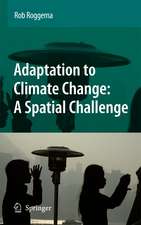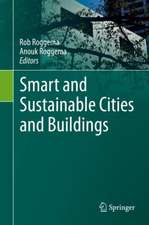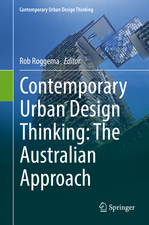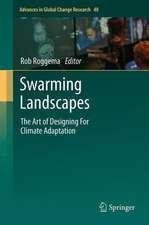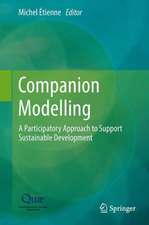The Design Charrette: Ways to Envision Sustainable Futures
Editat de Rob Roggemaen Limba Engleză Hardback – 25 sep 2013
| Toate formatele și edițiile | Preț | Express |
|---|---|---|
| Paperback (1) | 592.26 lei 38-44 zile | |
| SPRINGER NETHERLANDS – 27 aug 2016 | 592.26 lei 38-44 zile | |
| Hardback (1) | 654.77 lei 6-8 săpt. | |
| SPRINGER NETHERLANDS – 25 sep 2013 | 654.77 lei 6-8 săpt. |
Preț: 654.77 lei
Preț vechi: 770.31 lei
-15% Nou
Puncte Express: 982
Preț estimativ în valută:
125.31€ • 130.34$ • 103.45£
125.31€ • 130.34$ • 103.45£
Carte tipărită la comandă
Livrare economică 14-28 aprilie
Preluare comenzi: 021 569.72.76
Specificații
ISBN-13: 9789400770300
ISBN-10: 9400770308
Pagini: 364
Ilustrații: XXV, 335 p. 223 illus., 220 illus. in color.
Dimensiuni: 155 x 235 x 25 mm
Greutate: 0.82 kg
Ediția:2014
Editura: SPRINGER NETHERLANDS
Colecția Springer
Locul publicării:Dordrecht, Netherlands
ISBN-10: 9400770308
Pagini: 364
Ilustrații: XXV, 335 p. 223 illus., 220 illus. in color.
Dimensiuni: 155 x 235 x 25 mm
Greutate: 0.82 kg
Ediția:2014
Editura: SPRINGER NETHERLANDS
Colecția Springer
Locul publicării:Dordrecht, Netherlands
Public țintă
Professional/practitionerCuprins
Chapter 1: That stubborn Mr. Vedder.- Part I: GENERAL THEORY.- Chapter 2: The Design Charrette.- Chapter 3: Innovations in Organisational and Community Learning.- Chapter 4: Shifting Paradigms.- Part II: EXAMPLES AND CASE STUDIES.- Chapter 5: International Conference on Renewable Energy Approaches for the Spatial Environment (INCREASE).- Chapter 6: Charrettes in Two Days: Sea Lake and Bendigo.- Chapter 7: Lok Jumbish: Rural Participatory Design in Rajasthan, Lessons for the Future.- Chapter 8: Groningen; the Spread-out Charrette.- Chapter 9: Grounds for Change, Sustainable Energy Futures.- Chapter 10: Design Charrettes for Sustainable Building in China.- Chapter 11: Learning by practice, high-pressure student ateliers.- Chapter 12: The charrette of Mr. Xu.- Index.
Notă biografică
Textul de pe ultima copertă
This book was written to support community involvement in the design process, to help prevent negative outcomes that can result from a top-down design approach. The combination of community involvement and design is, at least in literature, not very extensive. Although much has been written about stakeholder involvement, this is often not directly related to design processes, which – most importantly – deprives community members of the opportunity to design their desired future themselves. The Design Charrette: Ways to Envision Sustainable Futures provides a theoretical foundation establishing the benefits of organizing a design charrette for community-based planning, supported by many practical examples. The book includes sections on collaborative learning, practical guidance, theory and case studies in many different contexts: long and short charrettes, urban and rural subjects, and Dutch, Chinese, Australian, Indian and European examples. Part I: General Theory offers a detailed overview of the charrette process, a chapter on innovations in organizational and community learning and a chapter on shifting paradigms in the design charrette. Part II presents a number of case studies, including the INternational Conference on Renewable Energy Approaches for the Spatial Environment (INCREASE); charrettes accomplished in two days in the communities of Sea Lake and Bendigo in Australia; a chapter on lessons for the future, describing rural participatory design in Rajasthan, India; a description of learning by practice in a high-pressure student atelier; a chapter entitled Design Charrettes for Sustainable Building in China and more. The Design Charrette challenges the conventional wisdom that good design by itself will bring about the benefits the designer envisions. By demonstrating and analyzing the effectiveness of design charrettes in personal development and learning, and as a way to share desired future pathways, the book benefits everyone who may be leading, considering or participating in a design charrette.
Caracteristici
Provides a theoretical basis for community based planning and design Includes case studies detailing different approaches, time frames and cultures around the world Presents many practical examples of design charrettes in action Integrates lessons from the case studies and examples in a hypothetical charette which can serve as a guideline for organizers and students






